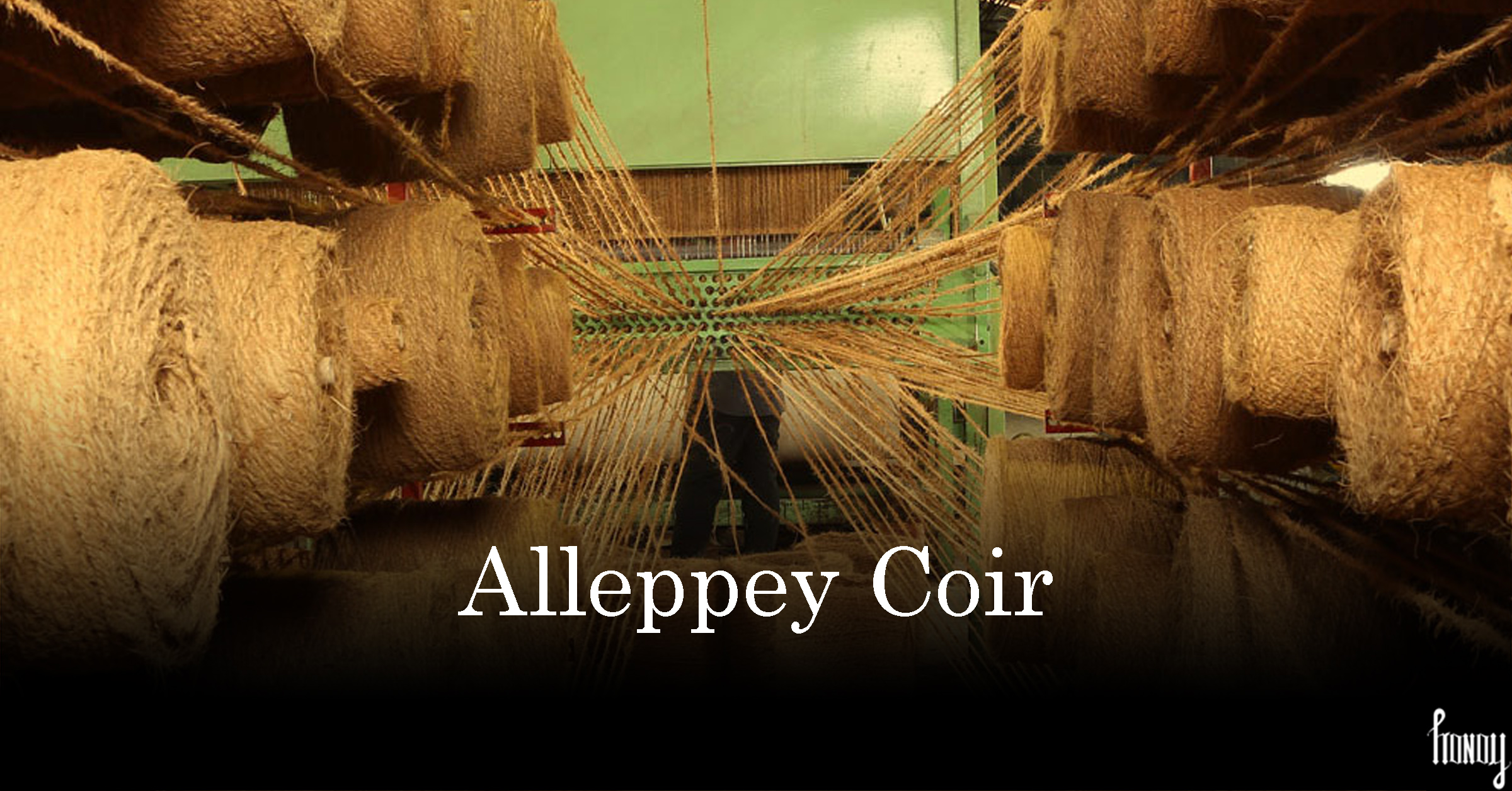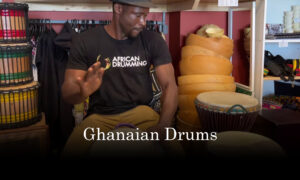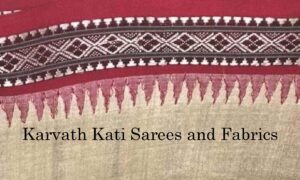Introduction
In the serene backwaters of Kerela, India lies a picturesque town of Alleppey. Also known as the ‘Venice of the East’. Alleppey is also known for the coir products made here, and such is their historical and cultural significance that in 2007 World Trade Organization (WTO) granted GI (Geographical indicator) status to its coir products. Because of the exceptional quality of the coir, the products made of Alleppey coir stand out from its coemption in the global market. This blog will delve in the various aspects of the crafts and tradition of coir products of Alleppey Coir.
History of Alleppey Coir
Coir (from Malayalam kayaru – cord) is a coarse fibre extracted from the coconut husk, the fibrous outer shell of the ubiquitous Kerela fruit. The history of Alleppey Coir is ancient as references to it can be found in the Ramayana. The journals of Arabic travellers to India also mentions the craftsmanship of coir products of Kerela. With the abundance od coconut trees, from which the raw material for coir comes, the state of Kerela became a natural epicentre for coir production. Until the 19th century, the coir production was done completely by hand. The mention of the first mechanised coir products and the beginning of an organised industry can be traced to mid 19th century.
In 1859 James Darragh and Henry Small established the first coir factory. Back then coir mats were known as Cocoa mats, and they were exported to mainly America and Europe. Following their success many European exporters setup their trades in Alleppey further boosting the popularity if these mattresses. After the success of the India Independence movement and the labour movement, the European companies were forced to leave Travancore which led to the decentralisation of coir production. With the independence of India, the ‘Coir Board of India’ was established as the foremost regulatory body to overlook coir production.
The Coir Making Process
The Alleppey coir begins it production life cycle with the humble coconut. The traditional coir process takes several days of intense labour. Traditionally the yarn is spun by women and the men are involved in the weaving and product making processes. . Today, modern machinery complements traditional methods, increasing efficiency while preserving the craft’s authenticity. The process of making the Alleppey coir involves the following steps:
Retting – The matured coconut husk also known as “Cocosnucifera” is softened by soaking in water for months to loosen the fibres and make them pliable for further processing.
Defibering – Once softened, the retted husk is traditionally beaten with wooden mallets to extract fine fibres. These fibres are golden-yellow in color giving the coir its unique shade.
Spinning – The extracted fibres are then spun into yarns. Originally this step was achieved by the women of Alleppey on the traditional Indian ‘Charkhas’.
Weaving – Once the coir is ready, the yarn is woven into a variety of predicts like mattresses, rugs, basket, ropes etc.
Cultural Significance
The name ‘Kerela’ is in itself a reference to it being the ‘land of coconut’, and thus it is a well-known fact that coconut is an integral part of the life and culture of the people of this land. Owing to this fact, the Alleppey coir become a cultural part of lives of people as it is made from the coconut husk. For the people of Alleppey, coir is more than just a product; it’s a way of life. Entire communities are involved in coir production, passing down skills through generations. Festivals like the Coir Kerala International Fair celebrate this heritage, showcasing the artistry and innovation of coir products.
Economic Impact
In many ways, the coir industry is a lifeline for Alleppey, providing employment to thousands and supporting local economies. From mats and mattresses to eco-friendly geotextiles, coir products from Alleppey find markets worldwide, cementing its reputation as a global coir hub. This makes it as the chief source of earning or many of the families and local business owners.
The Alleppey coir industry employs more than 7 lakh (700,000) people, a majority of whom are from rural areas who belong to economically weaker sections of society. Traditional to Modern India accounts for more than two-thirds of the global volume of coir and its products. Kerela, accounts for 61% of India’s coconut production and 85% of coir products. Thus, it can be estimated the financial impact of this industry in the local and national economy.
Environmental Aspects
Coconut is used in every part of the life of people of Alleppey, thus making the use of its husk for coir production an inherent sustainable practice. But at the same time, there are challenges like water pollution that happens because of the retting process. Thus, there needs to be changes to bring about these safe practices in order to make the Alleppey coir a truly sustainable product.
Innovations and Future Prospects
Technological innovations are transforming the coir industry of Alleppey coir. It has come a long way from being a simple cottage industry run by the local here every process was dome by hands. The industrialisation has revolutionised the coir industry, from automated spinning machines to new product developments like biodegradable coir pots, Alleppey is at the forefront of sustainable innovation. The future looks promising with increasing global demand for eco-friendly products.
Visiting Alleppey
A visit to Alleppey offers more than scenic beauty of the backwaters; it’s an immersion into the world of coir. The tourism department wants you to be a part of the Alleppey coir family by touring local factories, participate in coir-making workshops, and explore vibrant markets where coir products abound. For enthusiasts there is a great opportunity in the form of the International Coir Museum, which provides a fascinating insight into the history and evolution of this craft.
Conclusion
As we come to the end of this blog, we have now seen the history evolution and legacy of this fascinating craft of coir from Alleppey. In many ways the coir craft of Alleppey, embodies the perfect blend of heritage, sustainability, and innovation. Whether you’re a history enthusiast, a supporter of sustainable practices, or simply a curious traveler, Alleppey’s coir industry offers a rich and rewarding experience. Hope you have liked this blog. Please share your thoughts on how you feel about this blog.




























